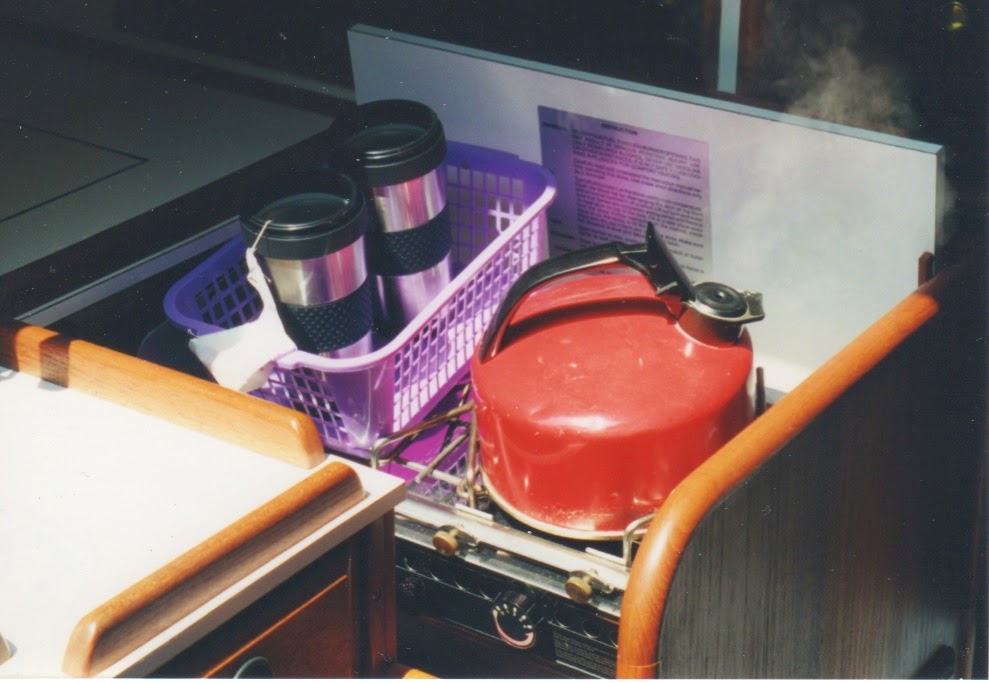Chutescoop (April 1992)
This hardware was purchased after we had a number of challenging take downs with our asymmetrical spinnaker. The Chutescoop was easy to install and fit well. With it installed, the spinnaker is hoisted while it is in the scoop.
The mast does not have a crane for a standard spinnaker halyard swivel block. So we installed a swivel block on the forward face of the mast, about 12 inches from the top of the mast. The halyard is lead through this block and the spinnaker head is hoisted to this block. This provides clearance for the spinnaker to pass aft of the forestay, when jibing. This block also functions prevent chafing of the halyard in the masthead sheave exit by limiting lateral movement of the halyard.
The sail tack is shackled to small block, sheaved for wire, that runs up the forestay. The height of this tack-block is controlled by a line that runs down to the deck, through a lower block, then back to a fair lead and jam cleat that is attached to the outside of the cockpit coaming. With this line, we have an easy means of adjusting the height of the tack.
Two sheets are tied to the spinnaker clew. They are lead, port and starboard, back to turning blocks at the aft corners if the cockpit. The active sheet is led forward, from the turning block to the active cockpit winch.
When all of the lines are set, the chutescoop control line is pulled which raises lower hoop of the chute. The chutescoop then compresses as it is raised to the top of the sail. The spinnaker opens, the lines are adjusted and we are on our way.
Jibing involves blanketing the sail with the main sail, easing the active sheet and pulling the spinnaker through the slot with the former lazy sheet. the main sail is sheeted during the process and eased after the boat has completed the jibe. The new active sheet is then adjusted and we are under way on the opposite tack.
For takedown, the spinnaker is, again, blanketed by the main, the sheet is eased and the control line for the lower hoop of the scoop is pulled. This pulls the chutescoop down around the spinnaker, forcing it into the Chutescoop. The halyard is the eased and the Chutescoop/spinnaker is collected on deck. The Chutescoop/spinnaker is picked up at the mid point and stuffed into the sail bag. The sheets, Chutescoop-control line and tack-control lines are then coiled and stored in the bag.
{Lessons learned:
1.Learn from your mistakes. Spinnaker take downs require planning and careful execution.
2. Keep your eyes and mind open to new and better technologies when they appear.}











